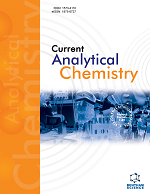
Full text loading...
Essential oils (EOs) are recognized for their potent insecticidal activity and are widely considered promising agents for pest control.
The insecticidal activity of seven commercial citrus EOs against the global phytophagous pest Thrips flavus was evaluated using bioassays conducted under laboratory conditions. Moreover, the chemical composition of these EOs was analyzed using gas chromatography-mass spectrometry (GC-MS).
Among the 45 identified compounds, the major constituents were d-limonene (23.77%–95.10%), methyl jasmonate (38.76%), and linalyl acetate (34.55%). Orange flower oil, sweet orange oil, tangerine peel oil, bergamot oil, lime oil, lemon oil, and grapefruit oil exhibited good insecticidal activity against T. flavus without demonstrating significant repellent activity. Orange flower oil and sweet orange oil showed higher insecticidal toxicity, with LC50 values of 0.20 g/L and 0.37 g/L, respectively. In pot experiments, the higher control efficacy against T. flavus was found after 7 days of treatment for orange flower oil (91.14±1.27% at 720.00 g a.i.·hm−2 and 100% at 900.00 g a.i.·hm−2), sweet orange oil (91.14±5.52% at 900.00 g a.i.·hm−2), tangerine peel oil (96.20±2.19% at 720 g a.i.·hm−2 and 100% at 900.00 g a.i.·hm−2), lemon oil (96.20±2.19% at 900 g a.i.·hm−2), and lime oil (97.47±2.53% at 900.00 g a.i.·hm−2).
Taken together, orange flower oil and tangerine peel oil, which were found to contain d-limonene and methyl jasmonate, demonstrated rapid and more effective insecticidal activity compared to the other EOs tested, which makes these two EOs promising alternatives to chemical insecticides.

Article metrics loading...

Full text loading...
References


Data & Media loading...
Supplements

